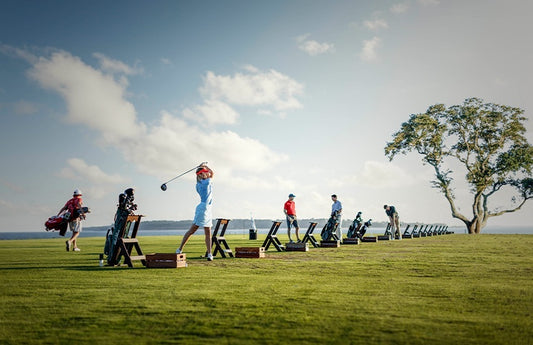By now you have figured out that GolfBallNut specializes in finding and selling used golf balls. Just last week, our collection team found 72,000 golf balls in 3 days. Our best estimates have us gathering over 20 million golf balls during our 2 decades of business and we have seen a wide variety of golf balls come through our facility. Back in the day, some of the crew would even come across a leather covered golf ball. That got us thinking about the history of the golf ball. What seems to be a simple design today is actually the result of several transitions over hundreds of years.
WOODEN GOLF BALLS
By many accounts it is presumed that the earliest games of golf were played with a wooden ball in the 14th century. It’s been refuted that wooden balls were never used in links golf in Scotland, but instead they were used in early games that were similar to golf. The evidence of the use of wooden golf balls is scarce, hence the debate around whether they were used by golfers.
HAIRY GOLF BALLS
From 1486 through 1618, the Scottish received and used the hairy golf ball imported from the Netherlands. The hairy golf ball was a hand-sewn round leather ball filled with cows’ hair or straw. In 1554 the hairy golf ball was being produced in Scotland by the “cordiners and gouff ball makers of North Leith.” These balls continued to be used even after the introduction of the feathery golf ball in 1618 because they were less expensive, thus becoming known as the ‘common’ ball. They were used up until the early 18th century.
FEATHER GOLF BALLS
In 1618 the feather golf ball was introduced, which was made similar to the hairy golf balls but with goose or chicken feathers. Since the feathery golf ball was filled with feathers it was able to be stuffed more full than the hairy, making it harder thus able to fly farther. To make a feather ball, the feathers and leather would be shaped while wet. Upon drying the leather shrank and feathers expanded creating the desired hardness for the ball.
GUTTIE/GUTTA GOLF BALLS
In 1848 Dr. Robert Adams Paterson invented the Gutta-Percha ball, or Guttie. The Guttie was made by using dried sap from the Malaysian Sapodilla tree. The sap had a rubber-like quality to it and upon heating could be formed into a sphere. The Guttie evolved further when it was discovered that the marks left on the ball after hitting the Guttie with the club actually made it more aerodynamic.
RUBBER CORE GOLF BALLS – HASKEL
The rubber Haskel golf ball is the standard for the modern golf ball. In 1898 Coburn Haskell made a discovery while awaiting Bertram Work, of the B.F. Goodrich Company, when he wound a rubber thread into a ball and bounced it. In 1967, Spalding became the first company to patent and develop the solid golf ball by Jim Bartsch, which eliminated the layered technique and became known as the ‘executive’ model. The layering techniques allow for golf ball manufacturers to create golf balls with different properties that help with different areas of your game. Some balls can fly farther while some are designed to generate more spin.
While it has been a while since we have come across a leather golf ball on any course, it is amazing to see how many changes the golf ball has gone through over the decades. Like it’s predecessors before it, don’t think that this is the final design of the golf ball. We wonder who will come up with the next innovative material or unique design to make the balls travel farther and faster. What do you think will happen next?


